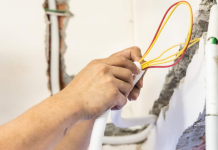The transformation of a conservatory into a year-round sanctuary hinges on the effectiveness of its insulation, particularly the roof. This is not merely about comfort; it’s about enhancing the conservatory’s functionality, reducing energy bills, and minimizing the ecological footprint. With the right insulation, the space can retain heat in the winter and deflect the sun’s intensity in the summer, making it a versatile addition to any home.
Table of Contents
Types of Conservatory Roof Insulation
Exploring insulation options often begins with a quick search for a roofing company near me to gain professional insights. Reflective foil insulation is a straightforward choice, reflecting heat and maintaining a stable temperature. Insulated roof panels are another practical option, offering tailored fitting and robust insulation. For a comprehensive upgrade, a solid roof conversion, facilitated by a local roofing company, can replace the existing structure with a tiled roof, significantly enhancing insulation and seamlessly blending with the home’s design.
Step-by-Step Installation Guide
The installation process begins with a thorough assessment of the existing roof structure. For reflective foil, the material is cut to size and carefully attached to the roof rafters, ensuring a snug fit without any wrinkles or sagging. Overlapping the strips will prevent thermal bridging and maximize efficiency. When installing insulated panels, it’s crucial to measure accurately, as a tight fit is essential for optimal insulation. These panels can often be retrofitted into the existing roof frame. With solid roof conversions, the process is more complex and typically requires professional installation, involving the removal of the old roofing material and the construction of a new, insulated roof.
Maintaining and Maximizing Comfort
Maintenance of your conservatory’s insulation might include periodic checks for any tears or sagging in the foil insulation and ensuring that any seals around insulated panels remain intact. To further maximize comfort, consider adding underfloor heating for a warm and cozy feel in the winter, and use ceiling fans to circulate air in the warmer months. Properly insulated conservatories can also benefit from the addition of plants that thrive in consistent temperatures, adding both beauty and a touch of nature to the space.
Conclusion
To wrap up, the benefits of insulating a conservatory roof are manifold. It’s an investment that pays dividends in comfort, energy efficiency, and property value. Whether you choose reflective foil, insulated panels, or a solid roof conversion, the result is a conservatory that stands as a testament to smart design and foresight, offering a peaceful retreat come rain or shine.
















